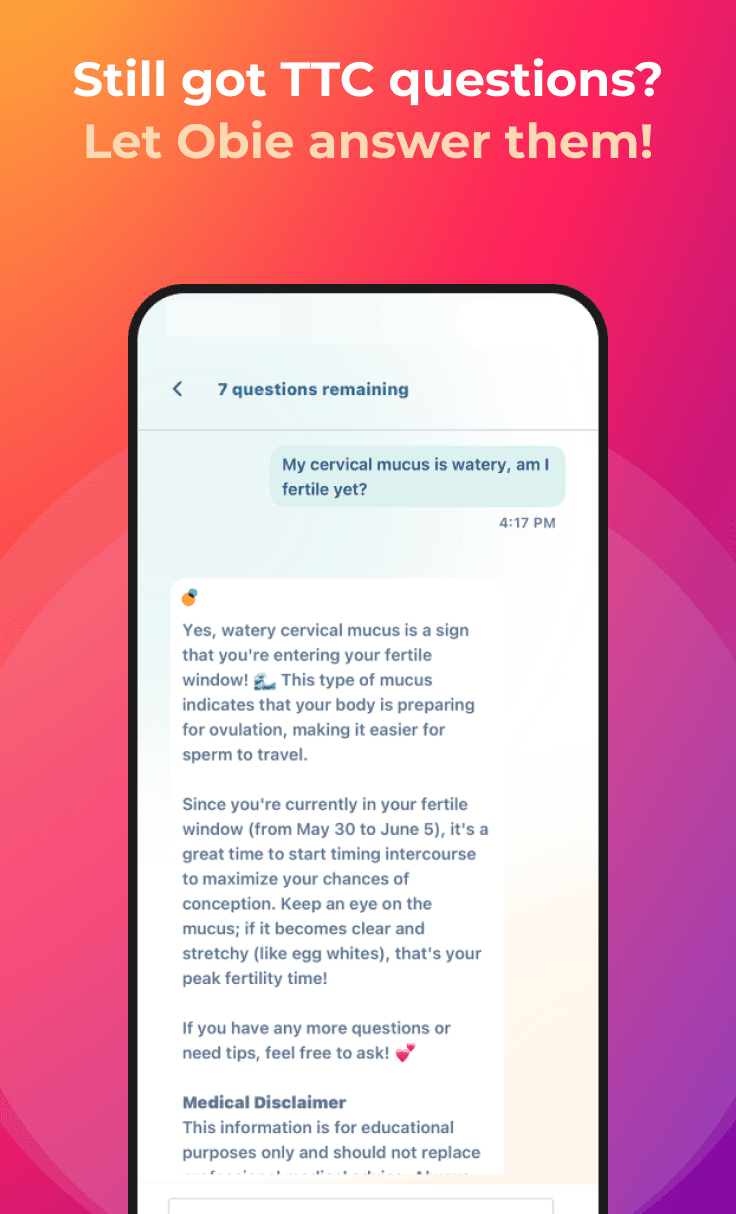Infertility Diagnosis and Tests for Women
Female Infertility
Obie Editorial Team

How to test if there is infertility
When you have problems getting pregnant, the very first steps include making the right diagnosis, and finding out what is causing infertility. Making the right diagnosis is essential to developing an effective treatment. Female infertility is responsible for about 50% of all infertile couples' infertility. In general, infertility diagnosis and tests for women include testing for ovulation, hormone testing, a hysterosalpingogram, and laparoscopy to check the patency of the fallopian tubes.
Before any tests are done on a woman, the very first test to do is a sperm analysis, a sperm count. About 50% of all known causes of a couple's infertility can be traced to a man's sperm problems, and doing a sperm count is much easier to do the many of the other tests done on women.
Most evaluations can be completed within 4-6 weeks of the first visit and most patients will be ready to start treatment immediately after evaluation.
Timing of infertility tests
Most fertility tests and procedures are timed to the menstrual cycle. A menstrual cycle is the number of days between two menstrual periods (bleedings). Twenty-eight days is usually considered the average cycle length, but most women have cycles between 26-30 days apart. The first day of full bleeding from your period is considered day-1 of the cycle.
Cycle day 3 blood infertility test
The start of your cycle, around cycle day #3, blood is drawn to determine your baseline hormone levels. FSH, LH, and Prolactin are the hormones that regulate reproductive function and are produced in the pituitary gland in the brain.
Estradiol (E2) and progesterone are the hormones produced by the ovaries in response to the pituitary hormones. The FSH and E2 levels tend to fluctuate between normal and elevated in different cycles for older women.
Pelvic ultrasound
A baseline pelvic ultrasound (transabdominal and transvaginal) is recommended to determine:
- The size and location of your ovaries, and
- Whether you have any ovarian cysts or uterine fibroids.
- Check for the pressure of any ovarian cysts, and
- Determine the number of visible follicles (5mm or larger) in your ovaries.
- Especially if you are older than 37, this antral follicle count can indicate how you will respond to stimulation.
Uterine/Tubal studies
These procedures document the condition of the uterine cavity and your fallopian tubes.
A Sonohysterogram (SHG), is recommended if regular ultrasound indicated the presence of fibroids or polyps inside your uterus.
SHG is an ultrasound procedure that involves injecting a saline solution to distend the uterine cavity first so it can be visualized better.
The presence of a polyp (a soft tissue growth from the uterine lining) or a submucosal fibroid (a fibroid with a component that bulges into the cavity) may interfere with embryo implantation and surgery is advisable before you proceed to fertility treatment. Hysteroscopy is recommended if a uterine polyp, fibroid or scar tissue are present within the uterine cavity.
- This is a simple procedure performed in a hospital under general anesthesia.
- The hysteroscope - a thin telescope with light optical lenses attached to a microcamera - is introduced through the cervix to visualize the interior of the uterus.
- The hysteroscope has a channel through which the surgeon can pass micro-instruments to remove the polyp, fibroid or scar tissue under direct visualization.
- Another test may include a laparoscopy.
Read More











